Abstract
Cremophor EL, a pharmacologically inactive solubilising agent, has been shown to reverse multidrug resistance (MDR). Using flow cytometric evaluation of equilibrium intracellular levels of daunorubicin (DNR), we found that eight other surface active agents will also reverse MDR. All the active detergents contain polyethoxylated moieties but have no similarities in their hydrophobic components. The properties of three polyethoxylated surfactants that showed the lowest toxicities, Cremophor, Tween 80 and Solutol HS15, were examined in more detail. The concentrations of Tween 80 and Solutol required to reverse DNR exclusion were 10-fold lower than for Cremophor. However while concentrations greater than or equal to 1:10(2) of the former two surfactants resulted in breakdown of cells, even 1:10 of Cremophor did not lyse cells. Studies of the effects of Cremophor on the uptake and efflux of DNR in normal and MDR cell types showed that Cremophor increases intracellular DNR primarily by locking the rapid efflux from the cells. This blockage of drug efflux may be mediated by a substantial alteration in the fluidity of cell membranes induced by Cremophor, as shown by decreased fluorescence anisotropy of a membrane probe. Consistent with these data, coinjection of adriamycin plus Cremophor into mice carrying a multidrug resistant P388 transplantable tumour significantly increased the survival time of the mice compared with adriamycin treatment alone.
Full text
PDF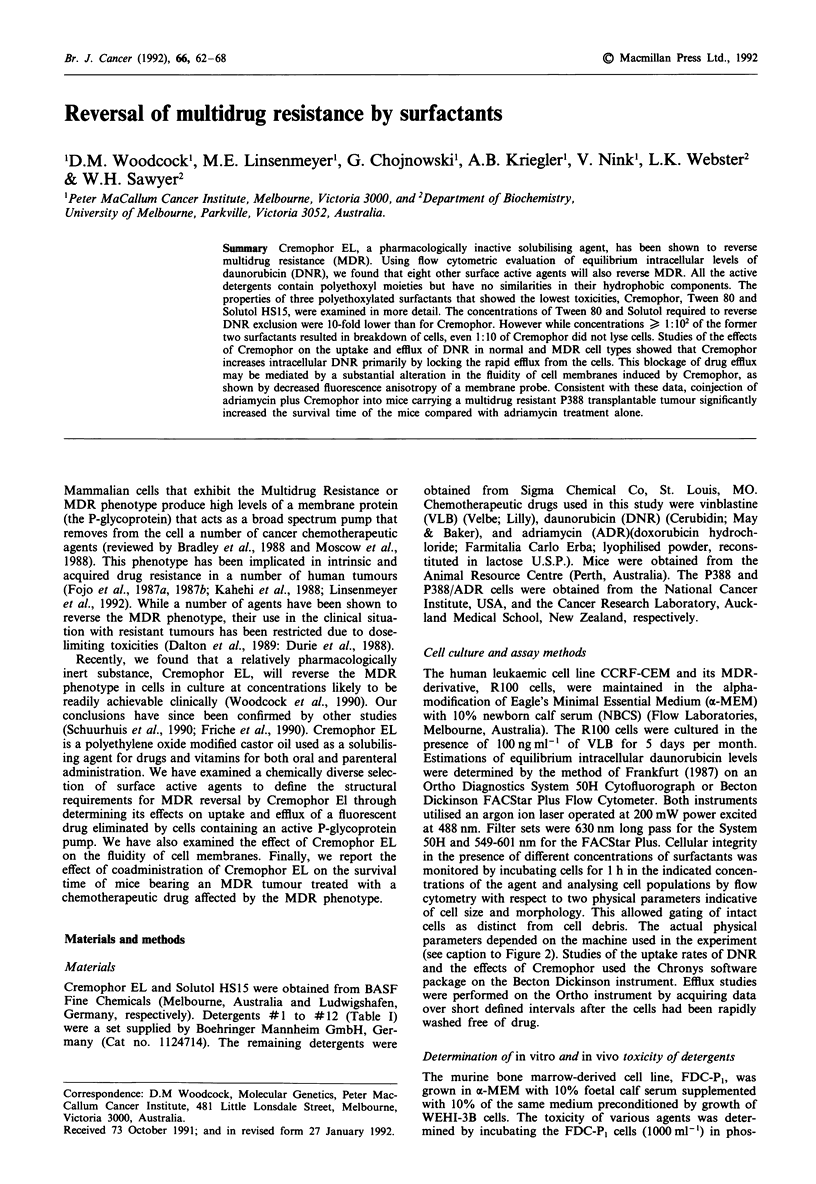
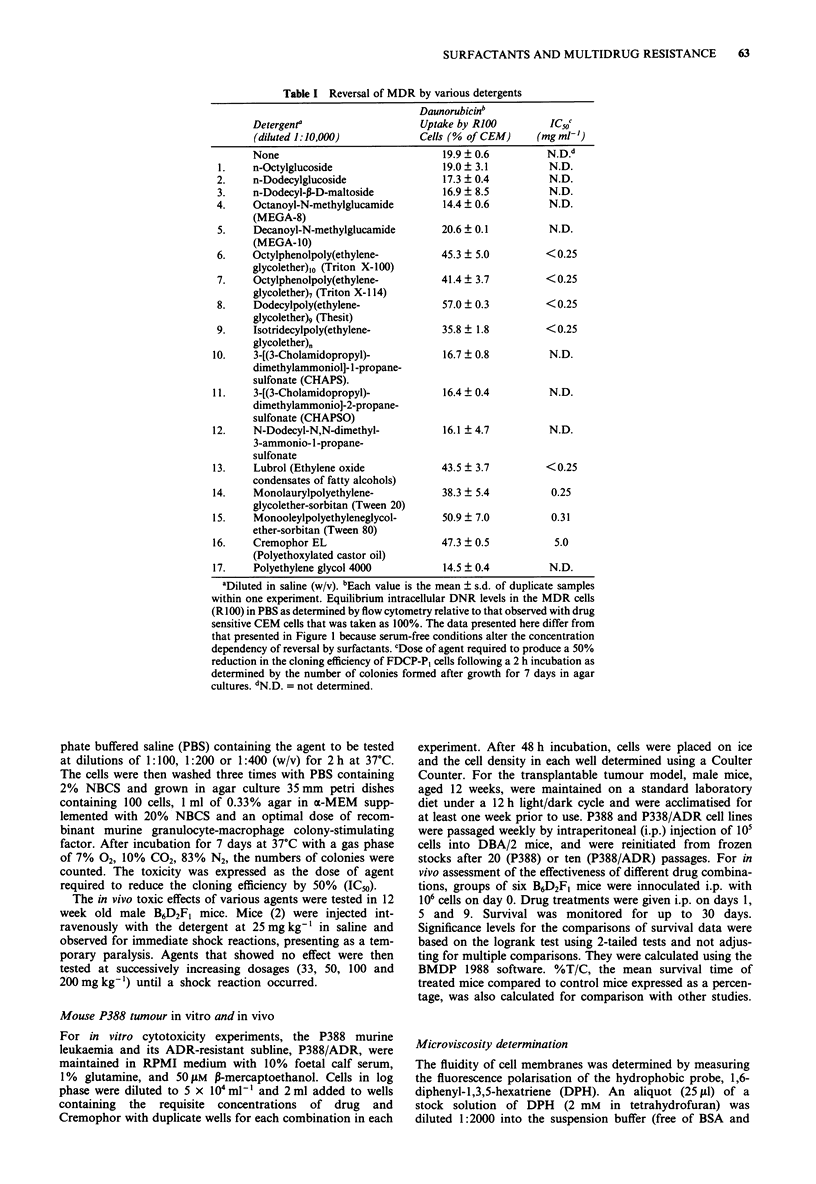
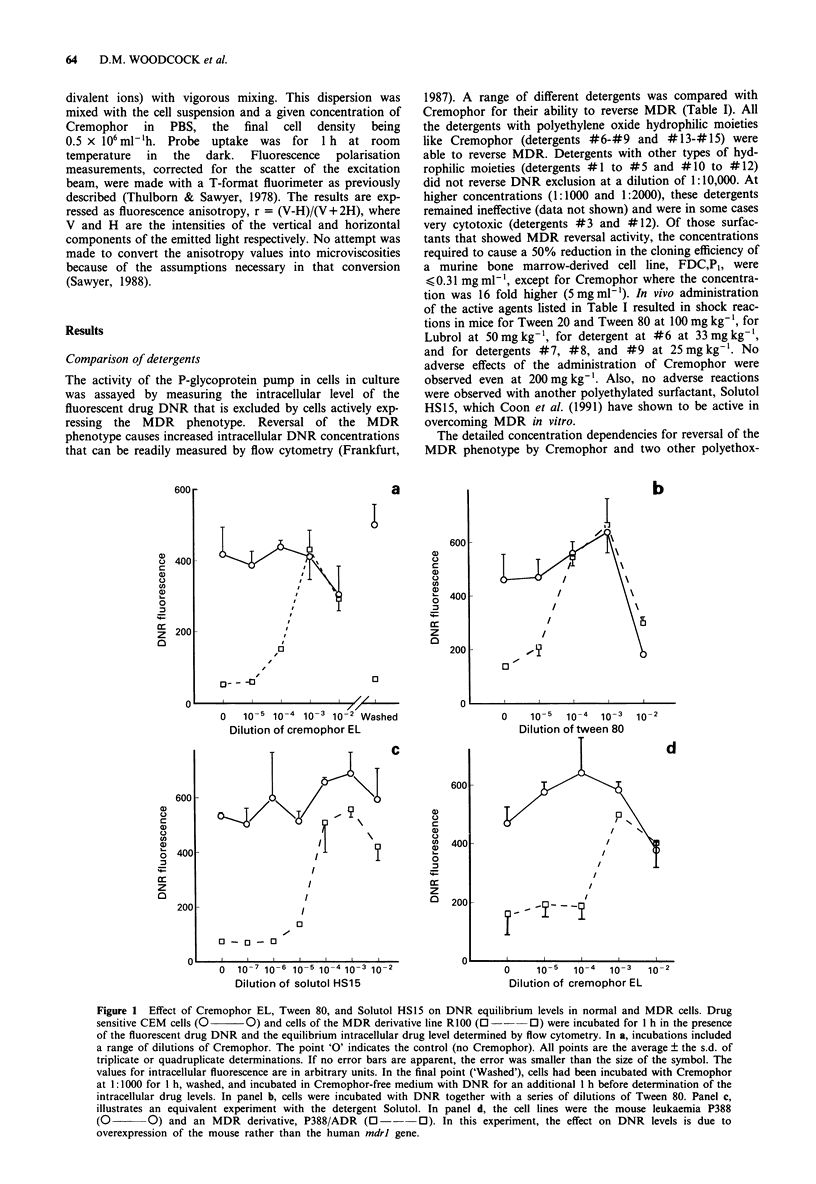
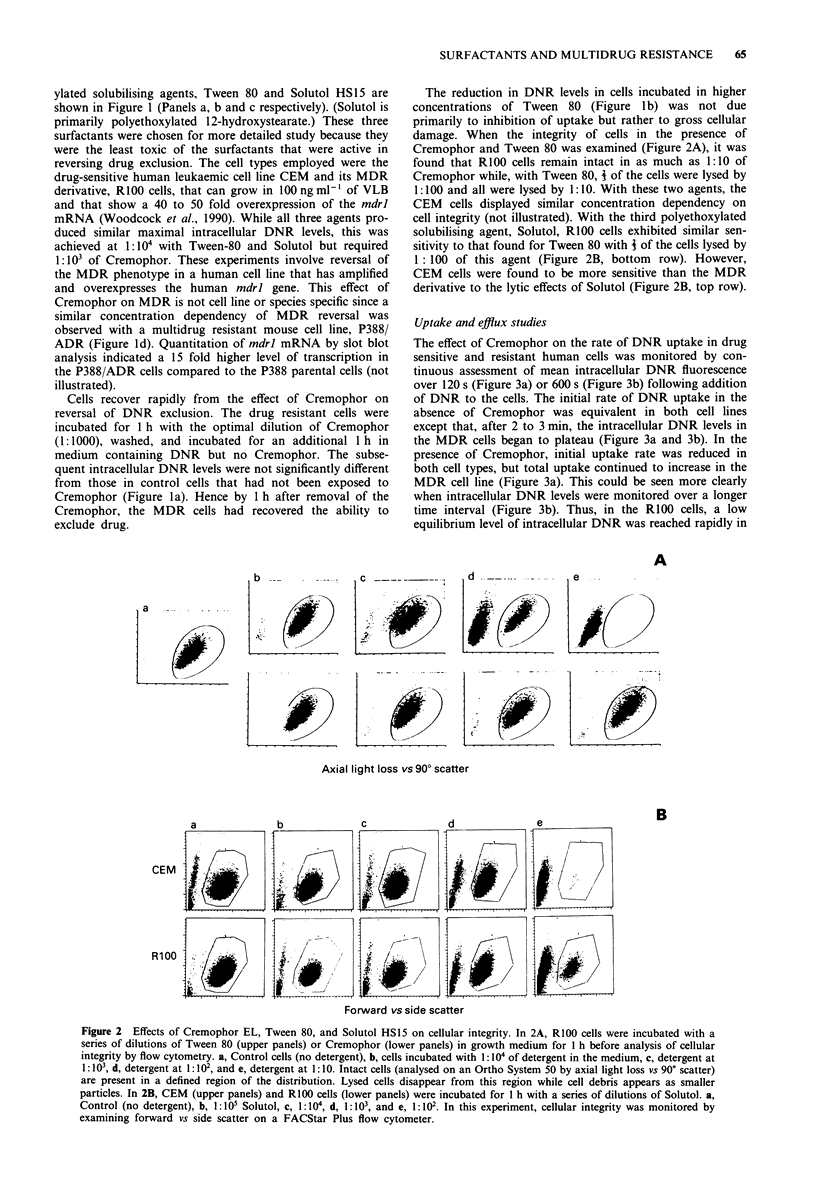
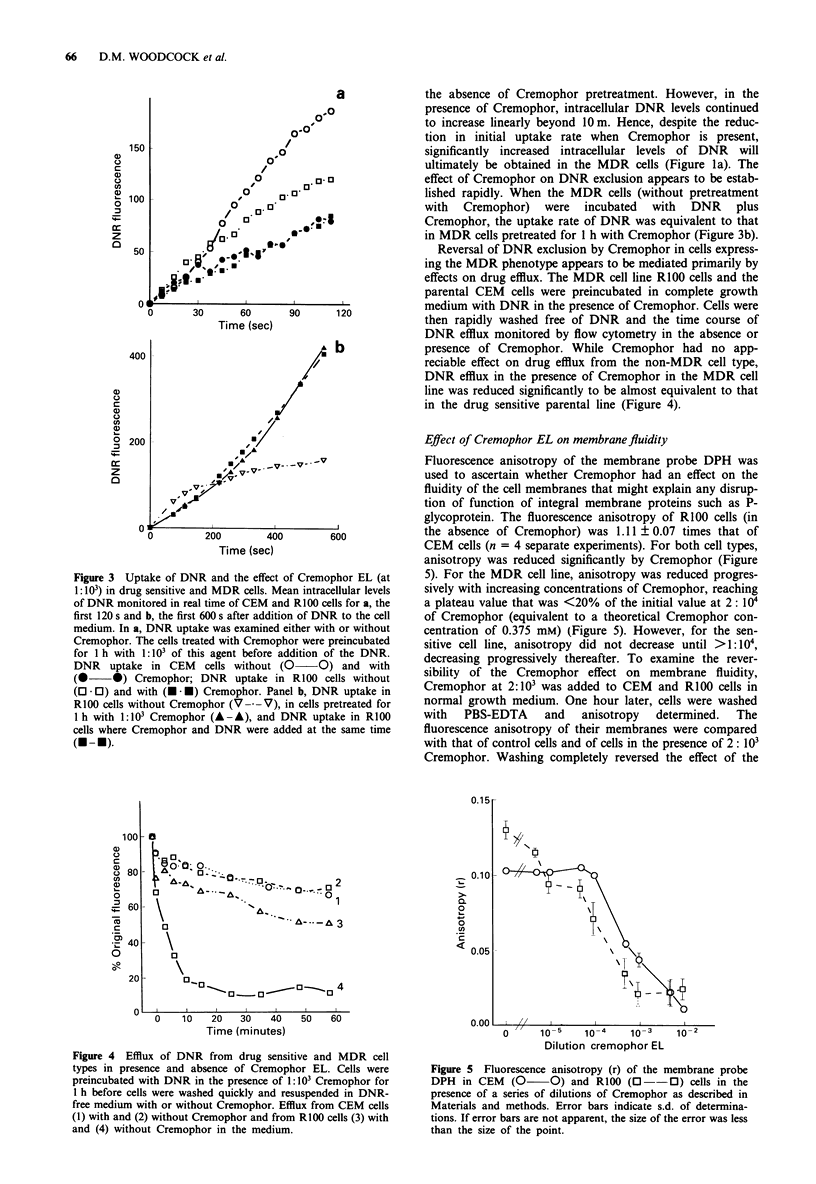
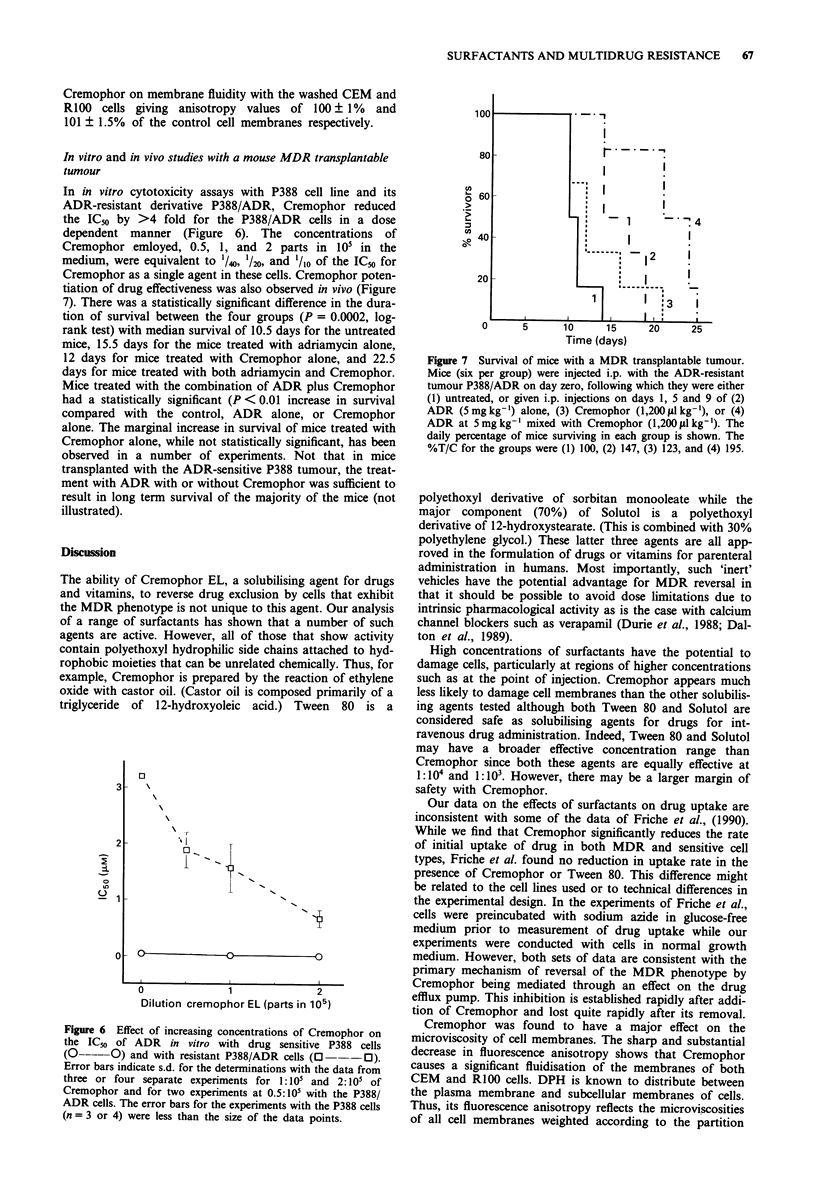
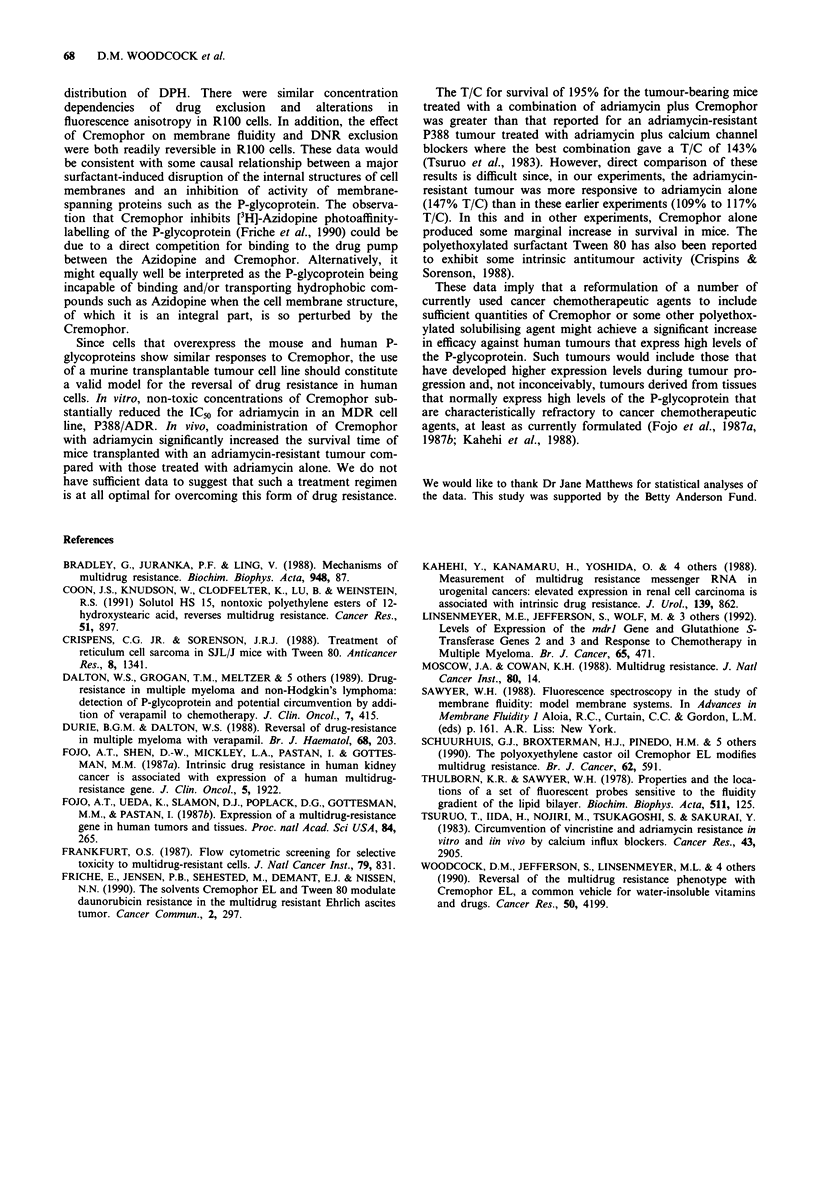
Selected References
These references are in PubMed. This may not be the complete list of references from this article.
- Bradley G., Juranka P. F., Ling V. Mechanism of multidrug resistance. Biochim Biophys Acta. 1988 Aug 3;948(1):87–128. doi: 10.1016/0304-419x(88)90006-6. [DOI] [PubMed] [Google Scholar]
- Coon J. S., Knudson W., Clodfelter K., Lu B., Weinstein R. S. Solutol HS 15, nontoxic polyoxyethylene esters of 12-hydroxystearic acid, reverses multidrug resistance. Cancer Res. 1991 Feb 1;51(3):897–902. [PubMed] [Google Scholar]
- Crispens C. G., Jr, Sorenson J. R. Treatment of reticulum cell sarcoma in SJL/J mice with Tween 80. Anticancer Res. 1988 Nov-Dec;8(6):1341–1343. [PubMed] [Google Scholar]
- Dalton W. S., Grogan T. M., Meltzer P. S., Scheper R. J., Durie B. G., Taylor C. W., Miller T. P., Salmon S. E. Drug-resistance in multiple myeloma and non-Hodgkin's lymphoma: detection of P-glycoprotein and potential circumvention by addition of verapamil to chemotherapy. J Clin Oncol. 1989 Apr;7(4):415–424. doi: 10.1200/JCO.1989.7.4.415. [DOI] [PubMed] [Google Scholar]
- Durie B. G., Dalton W. S. Reversal of drug-resistance in multiple myeloma with verapamil. Br J Haematol. 1988 Feb;68(2):203–206. doi: 10.1111/j.1365-2141.1988.tb06190.x. [DOI] [PubMed] [Google Scholar]
- Fojo A. T., Shen D. W., Mickley L. A., Pastan I., Gottesman M. M. Intrinsic drug resistance in human kidney cancer is associated with expression of a human multidrug-resistance gene. J Clin Oncol. 1987 Dec;5(12):1922–1927. doi: 10.1200/JCO.1987.5.12.1922. [DOI] [PubMed] [Google Scholar]
- Fojo A. T., Ueda K., Slamon D. J., Poplack D. G., Gottesman M. M., Pastan I. Expression of a multidrug-resistance gene in human tumors and tissues. Proc Natl Acad Sci U S A. 1987 Jan;84(1):265–269. doi: 10.1073/pnas.84.1.265. [DOI] [PMC free article] [PubMed] [Google Scholar]
- Frankfurt O. S. Flow cytometric screening for selective toxicity to multidrug-resistant cells. J Natl Cancer Inst. 1987 Oct;79(4):831–836. [PubMed] [Google Scholar]
- Friche E., Jensen P. B., Sehested M., Demant E. J., Nissen N. N. The solvents cremophor EL and Tween 80 modulate daunorubicin resistance in the multidrug resistant Ehrlich ascites tumor. Cancer Commun. 1990;2(9):297–303. [PubMed] [Google Scholar]
- Kakehi Y., Kanamaru H., Yoshida O., Ohkubo H., Nakanishi S., Gottesman M. M., Pastan I. Measurement of multidrug-resistance messenger RNA in urogenital cancers; elevated expression in renal cell carcinoma is associated with intrinsic drug resistance. J Urol. 1988 Apr;139(4):862–865. doi: 10.1016/s0022-5347(17)42663-2. [DOI] [PubMed] [Google Scholar]
- Linsenmeyer M. E., Jefferson S., Wolf M., Matthews J. P., Board P. G., Woodcock D. M. Levels of expression of the mdr1 gene and glutathione S-transferase genes 2 and 3 and response to chemotherapy in multiple myeloma. Br J Cancer. 1992 Mar;65(3):471–475. doi: 10.1038/bjc.1992.95. [DOI] [PMC free article] [PubMed] [Google Scholar]
- Moscow J. A., Cowan K. H. Multidrug resistance. J Natl Cancer Inst. 1988 Mar 2;80(1):14–20. doi: 10.1093/jnci/80.1.14. [DOI] [PubMed] [Google Scholar]
- Schuurhuis G. J., Broxterman H. J., Pinedo H. M., van Heijningen T. H., van Kalken C. K., Vermorken J. B., Spoelstra E. C., Lankelma J. The polyoxyethylene castor oil Cremophor EL modifies multidrug resistance. Br J Cancer. 1990 Oct;62(4):591–594. doi: 10.1038/bjc.1990.335. [DOI] [PMC free article] [PubMed] [Google Scholar]
- Thulborn K. R., Sawyer W. H. Properties and the locations of a set of fluorescent probes sensitive to the fluidity gradient of the lipid bilayer. Biochim Biophys Acta. 1978 Aug 4;511(2):125–140. doi: 10.1016/0005-2736(78)90308-5. [DOI] [PubMed] [Google Scholar]
- Tsuruo T., Iida H., Nojiri M., Tsukagoshi S., Sakurai Y. Circumvention of vincristine and Adriamycin resistance in vitro and in vivo by calcium influx blockers. Cancer Res. 1983 Jun;43(6):2905–2910. [PubMed] [Google Scholar]
- Woodcock D. M., Jefferson S., Linsenmeyer M. E., Crowther P. J., Chojnowski G. M., Williams B., Bertoncello I. Reversal of the multidrug resistance phenotype with cremophor EL, a common vehicle for water-insoluble vitamins and drugs. Cancer Res. 1990 Jul 15;50(14):4199–4203. [PubMed] [Google Scholar]


